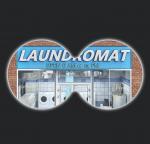ATLANTA — Choosing the right system for a laundry business can be daunting, especially with systems available for laundromat management, payment acceptance, point-of-sale for wash-dry-fold and pickup and delivery, accounting, and more.
So what features should you study when evaluating these systems? During the last Clean Show, multi-store owners Brian Henderson and Paul Hansen presented an educational session featuring tips and tools for evaluating new laundromat technology.
In Part 1, they discussed purposes for utilizing specialized software systems and the aspects of any tool to be evaluated before purchasing. Let’s conclude:
Is the system you have in mind user-friendly for your staff and customers? Or will it require a certain level of technical knowledge that not everyone has?
You’re adding technology to manage your laundromat and maximize your gains but maybe you’re asking more of your team than they can deliver, Henderson says. “Whichever system you’re adding, what hoops are you expecting or asking your customers or employees to jump through?”
About user control, look into the product’s ability to customize processes and reports, along with remote access capabilities.
“You want a system that you can, within reason, make it work with what you’re doing,” Hansen says.
Where contracts are concerned, you’ll want to know if the tool you’re looking into is subscription-based or a one-time purchase. Review the terms, and be especially mindful of clauses regarding cancellation and renewal.
“I’ve been burned a few times because I missed the renewal period,” says Hansen. “I try now to say I will have no perpetual renewal. It has to be renewed (by me) every year, not just (set it and) forget about it. I need the flexibility.”
Sometimes things don’t work out and you won’t want to keep your purchase, Henderson says. Clarify that there is a return policy and what’s involved before you buy.
Hansen says he’s a big fan of products that offer free trials or demos: “If they give a free demo, that’s ideal because you can play with it. A week long, two weeks, you just run it through every possible scenario. Then you know it’s going to actually do what you want it to do.”
You’d think that system cost would be straightforward but there are actually three separate areas at play there, Henderson says. They are subscriptions or pricing plans, credit card fees (for payment processing), and system hardware.
And a software’s ability to integrate, wherein the product you’re considering has the ability to communicate with other systems via internet connection, can be vitally important.
“Are you able to streamline things by making your stuff talk to each other? It’s easier to do that now than it ever has been before,” Henderson adds.
When judging remote access ability and maintaining data backups, there’s strength in automation and the ability to store and protect proprietary information through cloud-based storage.
“The shift to subscription-based everything is here to stay when it comes to technology but the advantage to that is a lot of things are hosted in the cloud, meaning your data is not stored locally on your computer but is more internet-based. If anything happens to your hardware … it’s good to know you haven’t lost all that data you collected.”
And finally, is the vendor willing to share references and to introduce you to other customers? If a vendor isn’t as forthcoming there as you’d like, it may be time to consider a different solution.
Have a question or comment? E-mail our editor Bruce Beggs at [email protected].











